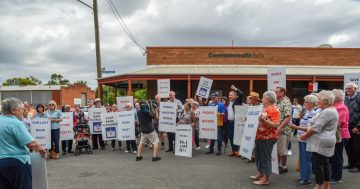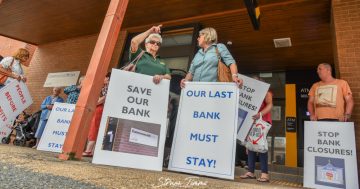
Queensland Greens MPs Amy MacMahon and Michael Berkman claim the public bank would save recent buyers $514 each month on an average mortgage. Photo: QLD Greens.
If elected in the upcoming state election, the Queensland Greens will seek to create a Queensland public bank that offers mortgages at 1.5 per cent less than the ‘Big Four’ banks.
The party wants to embark on this bold new policy with the hope it can save new or recent home buyers $514 a month, based on an average mortgage of $531,000.
Greens MP Michael Berkman said the Big Four, Labor and the LNP were crushing the Australian Dream.
“Right now, on average, $400 of every monthly mortgage payment you’re making is going into pure profit for the big banks,” he said. “While people are forgoing things like fresh fruit and veggies just so they can make their mortgage payments, the big banks are making $30 billion in profit every year.
“It should be criminal how much money the big four banks have made off the housing crisis. Labor and the LNP are happy to let the banks rip off Queenslanders because they both take millions in political donations from them.
“New Zealand has a publicly owned bank, Queensland and Australia used to have them, so there’s no reason we can’t have one again.”
Queensland Greens believe another public bank in Queensland could similarly drive down the cost of mortgages and their interest rates by creating more competition in the banking sector.
The party also claims it would offer fair mortgage rates, credit cards, savings and transaction accounts for households, and cash handling and EFTPOS facilities for small businesses with no fees.
“It’s time we brought back publicly-owned banking here in Queensland to take the pressure off families and first home buyers,” said Mr Berkman.
“I’m expecting Labor, the LNP and their friends like Anna Bligh in the banking lobby to absolutely spit the dummy at this idea, but that shouldn’t surprise anyone given how they’ve fed mortgage holders to the wolves.”
Earlier this year, a Senate committee recommended that an expert panel be commissioned to investigate the feasibility of re-establishing a publicly owned bank.
This advice was made in a final report of an inquiry into regional bank branch closures, which received several submissions in support of a stand-alone national public bank or one supported by using the branch network of Australia Post (PostBank).
However, the Financial Services Union did not support a government-funded public bank, with its representative from Queensland, Wendy Streets, saying the banks are shifting their costs back onto the taxpayer.
The Australian Citizens Party (ACP) said a key benefit of a public bank would be its ability to support investments in farming and small business, especially in regional areas. It could also guarantee access to cash, support the viability of postal services, invest in local and community infrastructure, and provide financial services to “neglected communities”.
In his personal submission, ACP production manager and editor Glen Isherwood argued that when the CBA was created, “the private banks immediately improved their treatment and services of customers, including by dropping fees”. He also said the opening of Kiwibank in New Zealand in 2002 had led to “a halt to branch closures”.
Mr Isherwood said introducing a public bank to compete against the major banks was “the only lasting way that the banks will be compelled to serve communities”.
Professor Schmulow said the idea of a PostBank had been “kicking around for a while” and argued “there’s a need for it”. However, he also cautioned that any new entrant into the banking market would have to face strict prudential regulation and high “capital adequacy rates”.
With these strong barriers to entry, Professor Schmulow simply said: “Good luck with that.”







